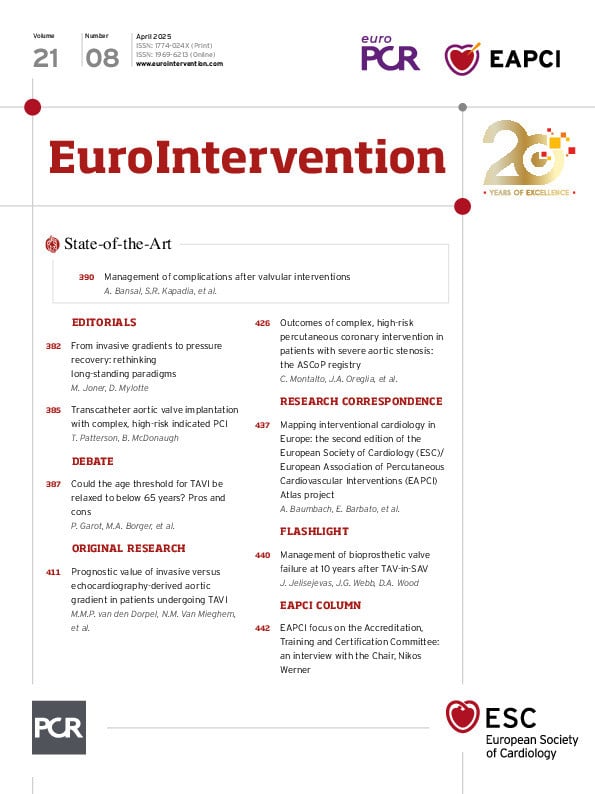Here in Europe, spring is well underway, and the range of topics is in full bloom! We think you’ll agree that there’s much to cover, and all of these subjects will be further expanded on at EuroPCR next month. Why not join us there?
At what age should TAVI be considered?
Should the threshold for transcatheter aortic valve implantation (TAVI) be decreased – going even under 65 years? Philippe Garot and Mariama Akodad debate with Michael A. Borger and Mateo Marin-Cuartas on this challenging question, with both sides musing over how life expectancy, clinical profiles and device improvements influence their thinking. Where do you stand?
Management of complications after valvular interventions
As transcatheter valvular interventions expand to new populations, the prevention and management of complications has become critical. Agam Bansal, Samir R. Kapadia and colleagues present a state-of-the-art review on the range of complications, their prevention and management following TAVI, mitral transcatheter edge-to-edge repair, and transcatheter mitral valve replacement.
Invasive versus echocardiography-derived gradients after TAVI
Mark M.P. van den Dorpel, Nicolas M. Van Mieghem and colleagues investigate the reported discordance between invasive and echocardiography-derived gradients after TAVI with balloon-expandable and self-expanding valves, finding a notable association between post-TAVI invasive gradients and mortality. Michael Joner and Darren Mylotte explore this finding in an accompanying editorial.
The ASCoP registry: complex PCI and TAVI
The occurrence of coexisting severe aortic stenosis and coronary artery disease with high-risk/complex features is rare but is increasing over the years. Using data from the ASCoP registry, Claudio Montalto, Jacopo A. Oreglia and colleagues evaluate the strategies and predictors of outcomes for patients scheduled for both TAVI and complex PCI, with a comparison of concomitant versus staged PCI. Tiffany Patterson and Benedict McDonaugh contribute an editorial on this article.
Mapping interventional cardiology in Europe
In a research correspondence, Andreas Baumbach, Emanuele Barbato and colleagues summarise changes in interventional practice as observed in the second edition of the ambitious ESC/EAPCI Atlas in Interventional Cardiology. An extensive compendium which brings together the latest data on infrastructure and procedures in interventional cardiology from the 35 participating National Cardiac Societies, the Atlas offers a valuable resource for future guideline and policy developments.

